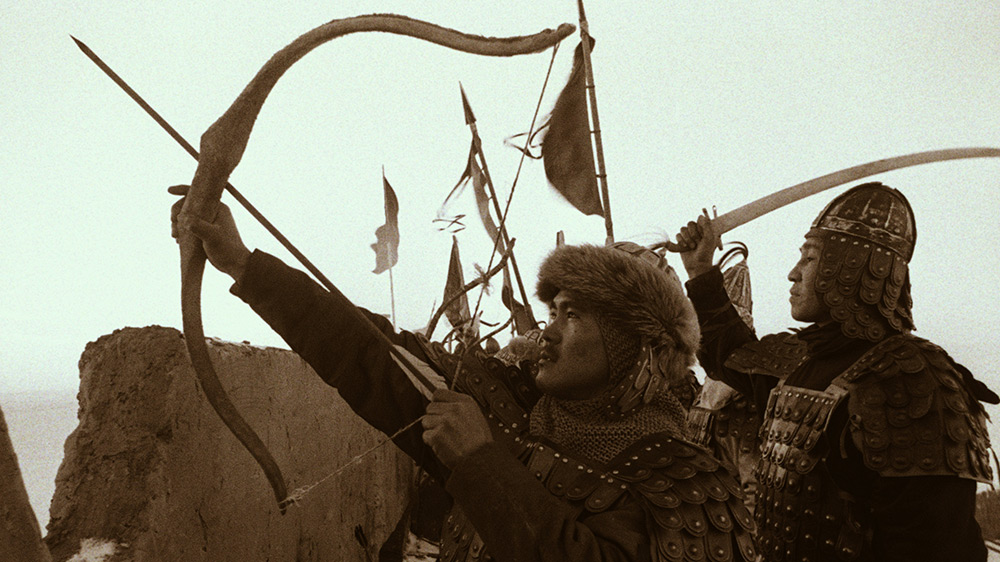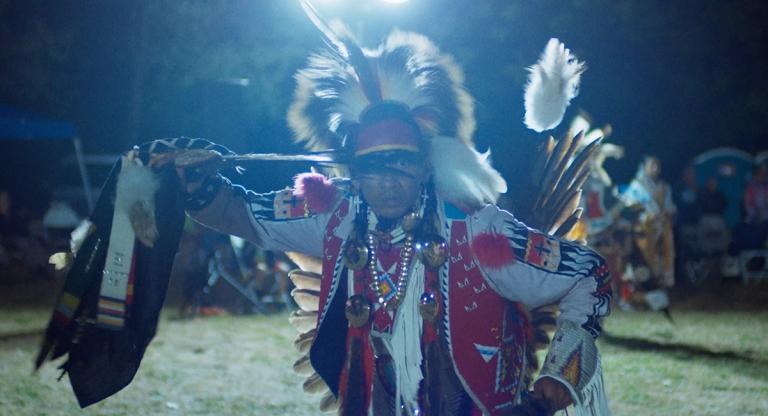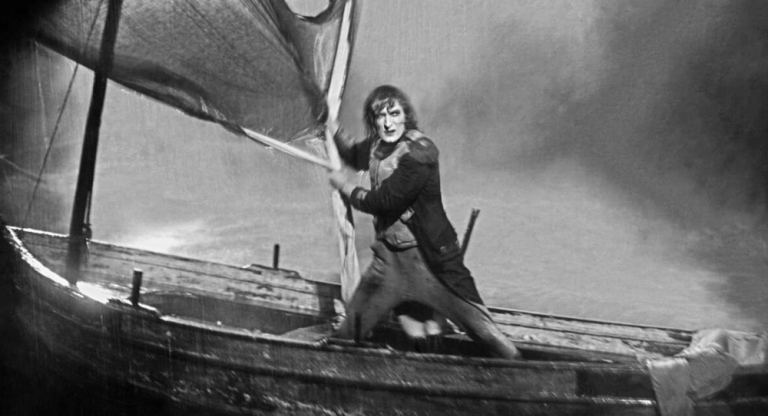When Aleksei German received an offer to write a screenplay from the Kazakhfilm studio in Almaty, he could scarcely turn it down. His masterpiece, My Friend Ivan Lapshin (1985), had just been shelved for its impermissible depiction of pre-Great Terror Soviet life and he now cut an unwelcome figure at home. Once in the Kazakh Republic’s capital, it was proposed that he and Svetlana Karmalita, his enduring collaborator and wife, produce a script about the dogged defense of the Central Asian city of Otrar against the armies of Genghis Khan.
Conjuring a novelistic screenplay out of a mess of historical accounts that “angrily contradicted each other,” German and Karmalita agreed that the young Kazakh filmmaker Ardak Amirkulov should direct the film. Originally intended to be Amirkulov’s VGIK graduation project, production soon spiralled out of control. Filming sputtered on for four years, interrupted by collapsing sets and empty coffers. Upon completion, it had a halting international release before sliding into semi-obscurity. The film’s elusiveness thankfully ends with its recent 4K digital restoration. The newfound clarity showcases the claustrophobic panorama of its world; Amirkulov intuitively cycles between scorched sepia stock and deep-hued color, drawing attention to the film’s striking textural palette. Much like German’s later Hard to be a God (2013), it is an immersive experience in which you can feel the beating sun, hear every gurgling death rattle, and smell the omnipresent shit.
The film’s bifurcated narrative is straightforward, though delivered with characteristic German opacity. In the first part, Kipchak soldier Unzhu returns after years spying in Genghis Khan’s army. Trusted by the governor of Otrar, he is nevertheless dismissed by the region’s ruler, Shah Muhammad II, who maintains that his true foes lie in Baghdad. The second part presents the titular fall. After visiting Mongol merchants and diplomatic emissaries are executed at the Shah’s behest, Genghis Khan invades and wages a campaign of brutality that destroys the empire. Of all the cities, Otrar holds out the longest, with its siege rendered on an incredible scale by Amirkulov.
The Fall of Otrar was written and produced in the twilight years of the Soviet Union, where the parallels of a patchwork empire unable to defy its fate are obvious. Yet, in the foreword to their published screenplay, German and Karmalita gesture at something far more eternal and tragically relevant. They write:
How did this indescribable defeat happen? Who were the people who foresaw the attack and tried to prevent it? [...] When we asked ourselves these questions and tried to answer them within the framework of the era—the early 13th century—history with amazing consistency once again proved to us that everything connected with tyranny is repeated in such detail that one could cry.
A new 4K restoration of The Fall of Otrar screens this evening, August 2, until August 7, at Film at Lincoln Center.



